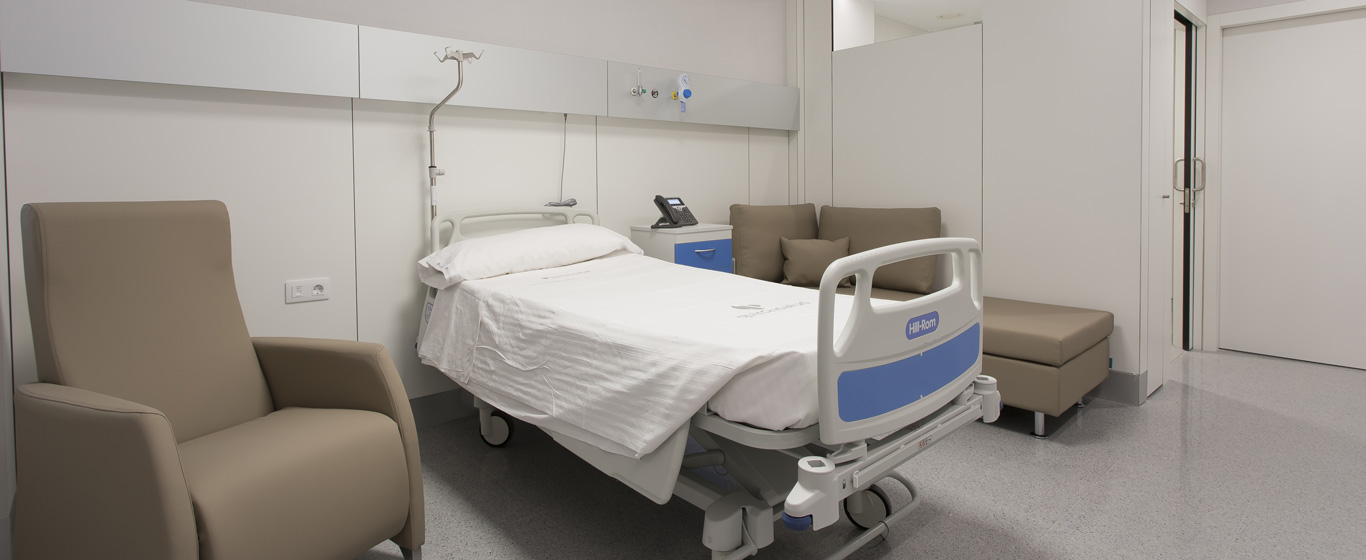Abdominal X-ray
An abdominal X-ray is a radiological technique that, through the application of ionizing radiation (X-rays), provides images of the organs and tissues inside the abdominal cavity, including the digestive system and part of the excretory system.

General Description
An abdominal X-ray is a diagnostic test that produces images of the organs and tissues contained in the abdominal cavity. Depending on which structures need to be examined, there are two main types of abdominal X-rays:
- Digestive system abdominal X-ray: Examines the stomach, liver, intestines, and spleen.
- KUB abdominal X-ray: Studies the kidneys, ureters, and bladder.
The X-ray technique is based on the application of high-energy beams (X-rays), which are absorbed by body tissues and transformed into an image by the receptor plate. The image is formed based on the amount of radiation each tissue absorbs (the denser a tissue is, the more radiation it absorbs and the lighter it appears in the image). The organs in the abdominal cavity are soft tissues that absorb little radiation and appear in various shades of gray in the image. Liquids and gases, which do not absorb radiation, appear black.
When is it indicated?
A specialist may order an abdominal X-ray if a patient presents certain symptoms, including:
- Abdominal or flank pain.
- Bloating.
- Nausea, vomiting.
- Bowel transit issues, such as prolonged constipation.
- Urinary problems, such as painful urination, abnormal urine color, or constant need to urinate.
An abdominal X-ray may help identify the causes of these symptoms, such as:
- Intestinal obstruction.
- Stomach or intestinal perforation.
- Presence of foreign objects.
- Kidney, bladder, ureteral, or gallstones.
- Presence of air around the intestine.
- Abdominal abscesses.
Additionally, an abdominal X-ray can be used to verify the correct placement of intra-abdominal devices, such as a nasogastric tube or a drainage catheter.
How is it performed?
Typically, an anteroposterior view of the abdominal X-ray is taken, with the patient lying on their back on the examination table, the X-ray machine suspended from the ceiling over the abdominal area, and the receptor plate placed beneath the patient. Another common projection is taken with the patient standing, facing away from the receptor (anteroposterior standing view), especially if a digestive tract blockage or perforation is suspected. If the patient cannot stand, the X-ray can be performed with the patient lying on their side.
The X-rays are recorded as an image on the receptor plate. Traditionally, a radiation-sensitive photographic film was used and had to be developed afterward, but modern equipment employs sensors that create a digital image, which is immediately displayed on a computer monitor.
Risks
Exposure to radiation, inherent in any type of X-ray, has been associated with potential health risks, such as cancer. However, a simple abdominal X-ray involves a very low dose of radiation (0.7 mSv), equivalent to four months of natural background radiation exposure that a person receives daily from the environment. Therefore, it is a safe test whose benefits far outweigh the potential risks. Additionally, modern equipment minimizes scattered radiation through controlled beams and uses lead shields to protect other areas of the body.
However, pregnant women should not undergo an abdominal X-ray, as the fetus is more sensitive to radiation. In such cases, an ultrasound is usually preferred.
What to expect from an abdominal X-ray
Before the test begins, the patient must remove clothing and metal objects and wear the gown provided. Once positioned on the examination table as instructed by the physician, a lead apron is placed over the pelvic area and neck to protect the reproductive organs and thyroid gland from unnecessary radiation. The specialist then moves to another room or behind a protective wall to operate the X-ray machine.
While the images are being taken, the patient must remain still to avoid defective images. They must also hold their breath to prevent diaphragm movement.
An abdominal X-ray is an outpatient, completely painless, and very quick procedure: each image capture lasts only a few seconds, and the entire procedure takes approximately 10 to 15 minutes. Once the study is complete, the patient can resume their daily activities as usual.
Specialties that request an abdominal X-ray
An abdominal X-ray is a common diagnostic test in the fields of primary care, emergency medicine, gastroenterology, and urology. Radiologists are responsible for performing the procedure.
How to prepare
If an abdominal X-ray is being performed to examine the digestive tract, it is recommended that the stomach and intestines be empty. Therefore, the patient may need to fast before the test. Additionally, an enema may be necessary to ensure complete evacuation. If a KUB X-ray is being performed, the patient may need to empty their bladder before the test.
It is also advisable to wear comfortable clothing and avoid metal objects, such as piercings, to prevent interference with the image. The patient should inform the specialist if they have an intrauterine device (IUD).












































































































